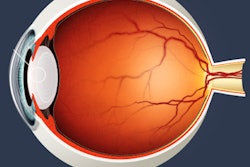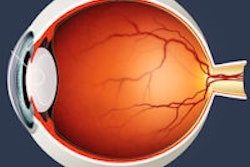Patients undergoing repeat CT scans to monitor head and neck cancers have a far greater incidence of cataracts, which develop at lower radiation thresholds than previously thought, according to a study by Taiwanese researchers in the September issue of the American Journal of Roentgenology.
The retrospective study of more than 30,000 patients in Taiwan found that cataracts developed at more than twice the rate in those who received repeat scans, compared with those who did not undergo multiple head CT scans -- even after patients undergoing radiotherapy and other high-risk groups were excluded, the authors reported. Exposure to more than four scans was independently associated with an increased risk of developing cataracts, they concluded.
"Repeated exposure to head and neck CT is significantly associated with increased risk of cataracts," concluded Dr. Mei-Kang Yuan, from National Yang-Ming University, and colleagues from several other centers in Taipei (AJR, September 2013, Vol. 201:3 pp. 626-630).
The eye lenses are among the organs most sensitive to injury from radiation due to their surface location and their direct contact with the x-ray beam, the authors noted. The relationship between cataract formation and exposure to radiation has been documented in epidemiological studies of atomic bomb survivors, as well as in several articles examining the incidence of radiation-induced cataracts in radiology department workers and among patients who have undergone repeated CT scans.
However, the explosion in CT scans in recent years indicates a need for further assessment, they wrote.
The population-based, case-control study used the Taiwan National Health Insurance Research Database (NHIRD) to examine the association between cataract development and radiation exposure from head and neck CT.
The random sample included approximately 2 million individuals enrolled in NHIRD, but it focused on an analysis of 2,776 patients ages 10 to 50 years with head and neck tumors who underwent at least one CT scan between 2000 and 2009. A much larger control group consisted of 27,761 unexposed individuals, who were matched with the subjects who received scans based on age, sex, history of coronary artery disease, hypertension, and diabetes.
The researchers factored in diabetes mellitus and any history of coronary artery disease or hypertension to balance demographic characteristics. In addition, patients who had been treated for cataracts were excluded, as were those with ocular and orbital tumors, in order to reduce the confounding factor of radiotherapy. Finally, age was limited to 50 years to exclude senile cataracts. Patients were studied until the primary end point -- diagnosis of a first cataract -- or until the end of 2009.
During an average 10-year follow-up period, 27 (0.97%) of the 2,776 patients in the exposed group and 201 (0.72%) of the 27,761 subjects in the nonexposed group developed cataracts. The adjusted hazard ratio (HR) was 1.76 (95% confidence interval [CI]: 1.18-2.63).
"After considering variables such as age, sex, hypertension, diabetes mellitus, and history of coronary artery disease, CT exposure remained significantly associated with a higher risk of cataract development," the authors wrote.
Stratifying the results by the number of CT scans the exposed group received, the researchers found "a gradually increasing cataract incidence that rose with the increasing frequency of CT studies." For one or two scans, the incidence was 0.79%; for three or four scans, it was 0.93%; and for five or more scans, it was 1.45% (p = 0.0001 for trend).
Radiation exposure due to repeated head and neck CT studies was independently associated with an increased risk of developing cataracts when patients were scanned more than four times (HR, 2.12; 95% CI: 1.09-4.14).
Conversely, the nonexposed group had significantly higher cataract-free survival over the follow-up period.
"Recent studies from atomic bomb survivors, Chernobyl clean-up workers, and residents of radiation-contaminated buildings show that the threshold radiation dose for inducing lens opacity is lower than previously reported," the authors stated. "Dose estimation due to inadequate data in such populations is difficult, whereas subsequent calculated risks in these epidemiologic studies may have limitations in validity."
Smaller studies have examined cataract development in relation to self-reported exposure to radiation, but they found either no association or an association for posterior subcapsular cataracts at relatively low doses, according to the group.
Animal experiments have shown that the pathogenesis of radiation-induced cataracts involves genomic damage to lens epithelium cells. "Theoretically, one genetically damaged cell with proliferative potential can be divided into a number of abnormal lens cells," potentially increasing the incidence of cataracts along with rising radiation dose, they wrote.
The researchers cautioned that their data are limited by the fact that patients received varying treatment protocols, in addition to mentioning other study limitations.
"Despite these limitations, the current study is one of the largest population-based studies to focus on the association between cataract and repeated head and neck CT studies," they concluded. "The results will be valuable evidence of the medical radiation hazards to lenses of the human eyes."



















